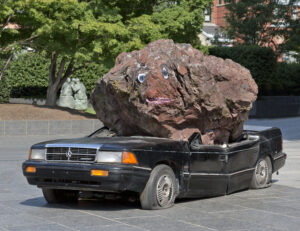
5 Questions (On Materials) Every Art Collector Should Ask Before Buying an Artwork
When starting or growing an art collection, there are some key questions every collector usually asks in order to get the more information as possible and make the best choice. However, there are some aspects that are commonly left behind. Let see some basic questions you have forgotten.
Who is the artist? Is him / her alive? What period does the piece belong to? Do it have a certificate of authenticity? Did it belong to another art collector before? Is it original? Should I invest in any particular artist? Thousands of doubts could come to mind before selecting a work of art for our collection, but do you have considered to ask the following questions?
1. With what materials is the work made up?
This question is fundamental since will proved you with further information on the conservation, protection and maintenance of your work. Buying a painting from the 19th century is not the same as buying a piece of videoart from 1960 or an installation made up of hundreds of objects found on a street in a city around the world. However, we must be very careful in the information the dealer or gallery provide to us. It isn’t enough to know that a painting uses oil, acrylic, plastic objects or led lights. What is really crucial is to know two things: to what extent are the materials of the work key to its meaning and its originality? This question becomes more important when it comes, above all, to works of contemporary art. So, make sure to always ask it.
2. What is the lifetime of the materials that make up the work? Are they perishable? Can they become obsolete?
Some works of art are made with perishable or technological materials whose lifetime is limited. By knowing this you’ll be able to know more about the care you should have, but also what are the best conservation conditions to ensure that your work does not suffer any significant damage.

Piero Manzoni, Merda d’Artista (Artist’s Shit), 1961
3. What should I do if one of the materials or objects in my piece has broken down, been lost or damaged?
When you buy a piece of art, artists and dealers usually gives a report as instructive to know how to handle, display or protect the work in the best way. In this case, ask for a list of “complex” materials the work may have and how they can be fixed or replaced if the material is dead or the technology used is already obsolete
4. Can I replace any of the materials or objects in my piece (installation, sculpture, collage, art-object)?
The first answer that may come to mind is a definite NO. The composition, structure and materiality of works of art constitute part of their originality and discourse, which is why many artists will prohibit you from making any modifications to the original piece. However, lets imagine that you bought a piece that functions with a discontinued TV on the market or that can no longer be repaired. What do we do about it? You have to recognize in which cases is important to ask this question according to the work you are acquiring.

Tracey Emin, My Bed, 1998.
5. What if one of the key materials or components for the piece and its function is no longer available?
This question is asked even by the best art conservators and restorers in the world, especially when the author of the work is not alive. Although it is a very difficult question to answer, by asking it you’ll be able to know which specialists or authorities you should go to in order to know how to proceed. In this case, surely the work will have to undergo theoretical, conceptual, material analysis, etc., to determine how the problem can be solved.
Extra: How can I keep my work and its components in the best conditions?
This question is the subject of another topic, but without a doubt it can take you to the next step: delve into the possibilities of conservation of contemporary artworks

Jimmie Durham: Still Life with Spirit and Xitle, 2007,


